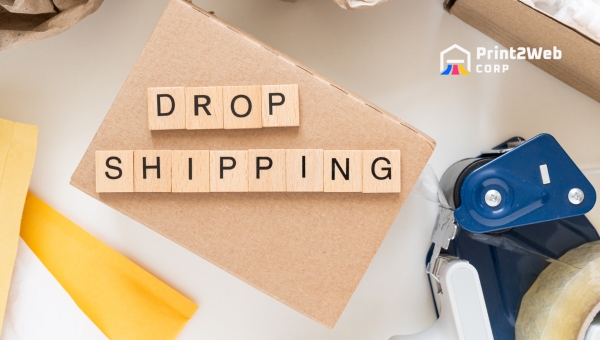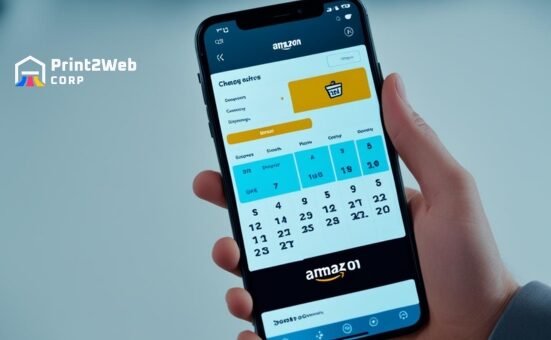Have you heard about dropshipping but aren’t quite sure what it involves? Let me shed some light on this popular business model. As someone who navigates the online marketplace daily, I’ve seen how dropshipping has opened doors for many entrepreneurs. It’s a way of selling where you don’t keep products in stock yourself – but more on that later. Imagine being able to start a business with minimal up-front investment and no need for a warehouse; sounds intriguing, right?
Dropshipping is pretty simple. It’s a retail method where the seller doesn’t have their own inventory. Instead, when customers buy something from your store, you pass the order and shipment details to a third-party supplier. The supplier then ships the product directly to the customer’s doorstep without you ever handling it. This means you can sell products online without needing piles of stock at home or renting storage space.
Here’s What You Can Discover Below:
- Unlocking the basics of dropshipping
- Advantages and challenges you may face
- Risk versus reward: is dropshipping right for you?
- How to find suppliers that are trustworthy
- Tips on ensuring a quality shopping experience for your customers
- Techniques for making your dropshipping business stand out
Understanding Dropshipping: What Is It, and How Does It Work?
Imagine you are an online retailer, but instead of storing products in a warehouse or your garage, the supplier ships products directly to your customers under your store name. This is the concept behind dropshipping.

Examining the Dropshipping Model
Dropshipping is a retail fulfillment model where the store doesn’t keep goods in stock. Instead, when you sell a product, you purchase it from a third party—typically a wholesaler or manufacturer—and have it shipped directly to the customer. As a result:
- You don’t need to tie up large amounts of capital in inventory.
- There’s no need for physical premises to store goods.
- The risk is more distributed—as you don’t buy anything until after you’ve made a sale.
Let me paint this with an example; suppose I run an online electronics shop. A customer orders a gadget worth $200 from my site. I then forwarded that order to my supplier, who offered me that item at $160 (including shipping). The supplier fulfills the order by packing and shipping it directly to my customer with my brand name on everything. I never handled or saw the product, yet I made a $40 profit!
Key Takeaways from Understanding Dropshipping
I believe now we understand what dropshipping means; let’s highlight some points:
- Efficiency: Dropshipping allows entrepreneurs like myself to start a business without having much initial investment for inventory.
- Scalability: Unlike traditional retail businesses, dropshippers are not required to scale up or down their office size according to changes in demand.
- Global Reach: In the dropshipping model, one can easily sell their products globally just by using eCommerce platforms like Shopify or WooCommerce without worrying about increasing shipping charges.*
- Broad Product Offerings: Without having to worry about inventory storage fees, sellers can offer a wide variety of merchandise than they would normally be able to handle.
But remember, like any business model, dropshipping has its benefits as well as downsides. Let’s uncover them in the next sections.
Also Read: Lawn Care Business Startup Guide: Tips for Success
Benefits of Choosing the Dropshipping Model
When someone mentions a word “Dropshipping,” my mind is filled with numerous advantages that it brings along. Here are some gripping reasons why dropshipping might be the perfect fit for your needs:

- Low Startup Costs: Unlike traditional brick-and-mortar stores or other e-commerce models that require significant upfront investment, dropshipping’s biggest draw is its minimal startup cost. You don’t need to invest heaps in inventory because you only purchase products when a customer places an order.
- Ease of Scaling: With most business models, if you receive more orders, you need more staff and resources. However, in dropshipping, the extra workload falls on the suppliers, allowing easy and cost-effective growth.
- Location Independence: Imagine running your business from a beach house or even while traveling around the world! This is pretty much possible with a laptop and reliable internet due to dropshipping’s location independence.
- Wide Range of Products: One charm about dropshipping is having no restrictions on what products to sell. Since you don’t stock items beforehand, there’s freedom to offer various goods from different suppliers matching market demands.
With perks like these, who wouldn’t be enticed by growing their business through dropshipping? It certainly comes off as an appealing low-risk avenue, particularly for those at their entrepreneurial dawn! However, like anything else under the sun-don’t forget to consider potential pitfalls (looming on the other end) before dusting off your entrepreneur hat!
Risk Factors in the Light of Profitability
Assessing risks while considering any business is an essential task. No one wants to step into the zone of uncertainty without knowing the possible hurdles, and dropshipping is not an exception either. Dropshipping, though it sounds promising, comes with its pros and cons.

Is dropshipping a high-risk game? Well, like every business model, dropshipping also has certain risk factors associated with it. However, the degree of risk can be modulated by one’s market demand evaluation and supplier reliability checks.
- Analyzing Market Demand: This is crucial for choosing your product range for dropshipping. If I pick products that don’t have enough demand in the market or have become outdated even before I start selling them – then there’s a chance I might make very few profits or even plunge into losses. Therefore, understanding market needs and keeping abreast with trends is pivotal.
- Supplier Reliability: Having considered market demand scenarios, it’s equally important to turn our gaze on supplier reliability because if they falter at delivering quality products on time – guess who gets a tarnished reputation? Yes – It’s me! So to ensure positive customer experiences and safeguard my online store’s credibility, I need reliable suppliers.
Balancing these two factors not only mitigates risks but also shines a light on profitability pathways in the world of dropshipping.
Finding Reliable Suppliers For Your Product Range
Handpicking reliable suppliers may seem like finding a needle in the haystack initially, but believe me; it’s something we just cannot afford to brush aside when engrossed in dropshipping scenarios because complete dependency lies upon them.
Here are some key points that might assist this navigation:
- Reputation Check – A quick Google search about potential suppliers will give me insights into their dedication towards service delivery through customer reviews and feedback.
- Timely Shipment – Suppliers who provide consistent and timely deliveries should be given the lion’s share of consideration in our choice since delayed deliveries might lead to customer dissatisfaction.
- Quality Checks – Although I won’t have direct access to products being drop shipped, I should still ensure their quality by demanding product samples before finalizing a partnership
With these inputs in mind, zeroing in on suppliers who can efficiently meet the needs of my online store becomes feasible. The piece of advice here is: Don’t rush, but choose wisely!
Also Read: Amazon A10 Algorithm: Unlock Sales & Boost Rankings
When Does Engaging in Dropshipping Design Make Sense for Your Business?
Making sense of whether to get your business involved in dropshipping can be a difficult decision. It’s crucial to consider the various aspects that might affect your business, including control over product quality and where you’re going to sell your products.

Not every business model suits every firm, so let’s take a closer look at some key considerations.
Considerations Regarding Control Over Product Quality
When running an ordinary retail business, you have complete control over the quality of the products since they go through your hands before reaching the customer. But it might not be the case with a dropshipping model, as you never see or touch the products you sell.
- You’ll need to establish trust with your supplier over time;
- Some suppliers will allow product sample orders so that you can verify their quality, which would be highly beneficial;
- Continually check customer reviews about product quality and address any negative reports immediately.
Mapping Out Where You Will Sell Your Products
Identifying where to sell your products is another vital factor when considering engaging in dropshipping. This choice may impact brand visibility, shipping costs, and customer engagement.
- Online marketplaces like Amazon or eBay can provide significant exposure due to their high traffic volumes;
- Setting up an eCommerce shop using platforms like Shopify or WooCommerce could give more control over branding and customer experience;
- Using social media platforms for selling has become increasingly popular lately with features like Facebook Marketplace or Instagram Shops.
Distinguishing Your Store In The Competitive Market
The online market is crowded, making it essential for any dropshipping venture to find ways of standing out from competitors:
- Offering distinctive products that aren’t readily available on other sites might help draw customers in;
- Providing excellent customer service can also differentiate from other stores;
- Using effective SEO strategies will certainly better position amongst competitors on search engine results pages.
Ensuring a Positive Delivery Experience for Your Customers
Finally, a crucial aspect of any eCommerce business, including dropshipping, is ensuring a positive delivery experience for your customers. This process can be more challenging as suppliers do the logistics part:
- Be transparent with clients about possible shipping delays;
- Track orders and provide customers with regular updates;
- Choose reliable suppliers who are known for their quick and efficient delivery services.
Overall, engaging in dropshipping makes sense if you’re skilled in digital marketing, specifically in SEO strategies, and have excellent supplier relations. Always remember that customer satisfaction is king – attain it by providing high-quality products while delivering excellent service.
Also Read: Do you need an LLC to Sell on Amazon: Seller Guide Revealed!
The Integration Of Technology In DropShipping
As I delve deeper into the world of dropshipping, I cannot ignore the pivotal role technology plays. It’s undeniable how tech enhancements have revolutionized operations and streamlined processes in this field.

So, let’s take a closer look at just how impactful these advancements are.
Role Of Technology Enhancements For Better Operations
In the dropshipping business model, operations include sourcing products, listing them on my online store, processing orders, and handling deliveries. Each of these tasks needs to be executed efficiently for a successful venture. Here is where technology steps in as an invaluable ally.
- E-commerce Platforms: Creating an online platform requires extensive coding knowledge or hiring a web designer. But now? Numerous e-commerce platforms like Shopify and WooCommerce make setting up my store as easy as pie. These sites offer ready-made templates that can be customized according to my preferences.
- Inventory Management Software: Keeping track of stock levels was once painstakingly manual work, but not anymore! Inventory management software such as Zoho Inventory or TradeGecko enables real-time tracking, which ensures that I never oversell a product that is out of stock at my supplier’s end.
- Automation Tools: Tasks like processing orders used to be time-consuming, but thanks to automation tools like Oberlo (for Shopify) and Ezusy (for WordPress), these tasks are now automated! This means less time spent on mundane tasks and more focus on creating marketing strategies for my brand.
- Customer Relationship Management (CRM) systems: These facilitate effective communication with customers by managing customer contact information, order history, etc., all in one place.
Interestingly enough, many dropshipping businesses are leveraging AI technology, too! Chatbots answer customer queries around the clock, while machine learning algorithms help predict buying patterns. This shows that even newer technological forms impact various aspects of the dropshipping model!
All this technical wizardry has one central purpose in my dropshipping journey – to ensure seamless operations and carve out a niche for my business amidst fierce online competition.
Comprehending the role of technology in dropshipping is not just about understanding how to set up a store or track inventory; it’s about recognizing technologies as powerful tools. They can be used to improve systems, boost efficiency, and elevate my brand to its true potential. As I exploit these tools better, I’m more likely going to secure a profitable position within this competitive e-commerce space.
FAQs
How does dropshipping make money?
Dropshipping generates profits when customers purchase products from your online store at retail price, and you pay the supplier at a lower wholesale rate. The difference between these two prices is your profit.
How does dropshipping work for beginners?
For beginners, dropshipping involves choosing a niche, finding a reliable supplier, setting up an e-commerce store, and marketing the products to potential customers. There’s no need to manage inventories or shipping logistics; suppliers handle these.
What is an example of dropshipping?
An example of dropshipping could be owning an online apparel store. Instead of stocking items like dresses or shoes yourself, you list those items in your shop from various suppliers. When someone buys from your shop, you order from the supplier, who then ships directly to the customer.
How do I become a drop shipper?
Becoming a dropshipper requires research into profitable niches, identifying reputable suppliers willing to dropship products for you, creating an ecommerce website or leveraging existing platforms like Amazon or eBay, and effectively promoting your business across various channels.
Also Read: Approval to Sell Toys on Amazon: Ultimate Success Guide
Conclusion
As an entrepreneur, the concept of dropshipping is indeed a game-changer. It’s a model that significantly reduces initial investment while letting us tap into endless product offerings.
However, with the benefits of easy startup and flexibility come challenges like finding reliable suppliers and ensuring customer satisfaction through timely deliveries. But these hurdles are not insurmountable as careful planning and smart usage of technology can navigate us through them towards profitability.







